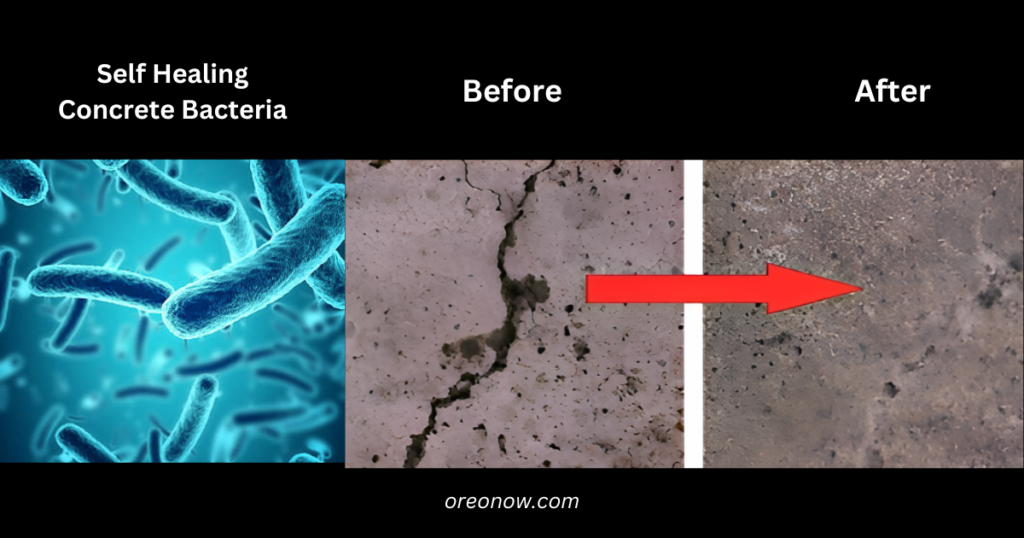Futuristic Self-Healing Concrete Made from Fungi Allows for Eco-Friendly Construction
Scientists have created an innovative technique using “knitted molds” to grow building materials to promote Eco-friendly construction in the Construction industry.
The construction industry is one of the largest contributors to climate change, accounting for around 38% of global CO2 emissions. To eliminate this, a new type of concrete made from fungi could offer a more sustainable alternative.
Knitted molds serve as flexible frameworks, enabling the creation of a composite called “mycocrete.” This composite material is both stronger and more adaptable in shape, offering the potential to cultivate lightweight and eco-friendly construction materials.
How will the Construction Industry use Mycocrete for eco-friendly construction?
Mycocrete has the upper hand over traditional concrete. It is more sustainable, as it does not require cement, which causes CO2 emissions. It is also more lightweight, making it easier to transport and use. Additionally, mycocrete is self-healing, meaning that it can repair small cracks on its own.
Scientists are still working to improve the properties of mycocrete, but it has the potential to revolutionize the construction industry. It could help to reduce the environmental impact of construction and create more sustainable buildings.
Let us go through some of the major applications of mycocrete:
- Insulation
Mycocrete can be used to create insulation that is both lightweight and effective. This could help to reduce energy costs and improve the comfort of buildings.
- Soundproofing
Mycocrete can be used to create soundproofing that is both effective and sustainable. This could help to reduce noise pollution and improve the quality of life in developed areas of society.
- Bioremediation
Mycocrete can be used to create bioremediation products that can help to clean up contaminated soil and water. This could help to improve the environment and protect human health.
As research into mycocrete continues, it is likely that this material will become more widely used in the years to come.
5 Significant Perks of Using Mycocrete
- Reduced environmental impact
Mycocrete is made from agricultural waste products, which means that it does not require the use of cement, which is a major source of CO2 emissions.
- Lightweight
Mycocrete is lightweight, which makes it easier to transport and use. This can also help to reduce the environmental impact of construction, as it requires less energy to transport the material.
- Strong
Mycocrete is strong, which means that it can be used to create durable and long-lasting structures.
- Biodegradable
Mycocrete is biodegradable, meaning it can be returned to the earth at the end of its life. This helps to reduce the amount of waste that goes to landfills.
- Self-healing
Mycocrete is self-healing, which means that it can repair small cracks on its own. This helps to extend the lifespan of structures and reduce the need for repairs.
- Self-heating
Mycocrete can also self-heat, which could be used to warm buildings in cold climates. This could help to reduce the need for fossil fuels for heating.

How is Mycocrete made?
Mycocrete is made from the mycelium of fungi, which is the thread-like network that forms the body of the fungus. spores of fungi are mixed with agricultural waste products, such as straw, corn stalks, or wood chips.
This mixture is then packed into a mold and placed in a dark, humid, and warm environment. The mycelium grows and binds the substrate together, creating a solid material. The process takes about two weeks to complete.
Once the mycocrete has reached the desired strength, it is dried out. It is lightweight, strong, and fire-resistant. Adding to one of the many advantages, it is also biodegradable.
All In All
The emergence of mycocrete as an innovative building material signifies a positive shift towards eco-friendly construction. With its lightweight nature, versatility, and self-healing properties, mycocrete offers exciting possibilities for green building practices.
As further research unfolds, mycocrete has the power to make a big impact on the construction industry, promoting a more sustainable future.
Must Read: Google Sued for Scraping Data from Millions of Users to Train AI



